How We Test Your Control Panels at Bensons
Comprehensive Testing Provides the Peace of Mind you Need
At Bensons we pride ourselves on building the highest-quality, electrical control panels, designed to precisely meet the exacting standards of some of industries most demanding customers.
A key characteristic of a Bensons control panel is that it can be set to work as soon as it is installed and powered up on site. Our customer’s commissioning engineers can trust that the control panel is correct, allowing them to focus on optimizing the performance of their system not debugging a control panel, saving valuable time at the part of a project where time is typically in short supply.
Why do you test a control panel?
It would be nice to think that once a design has been agreed, then it is just a case of building the control panel in line with the drawings and delivering it to site. Unfortunately, when a typical control panel can contain over 700 individual components and upwards of 3,000 individual electrical connections, configured in accordance with a unique design, there will always be a need to ensure that the control panel has been put together correctly.
A control panel that has been well designed and constructed to the highest standard will have three key characteristics, testing the control panel will validate that all three are present.
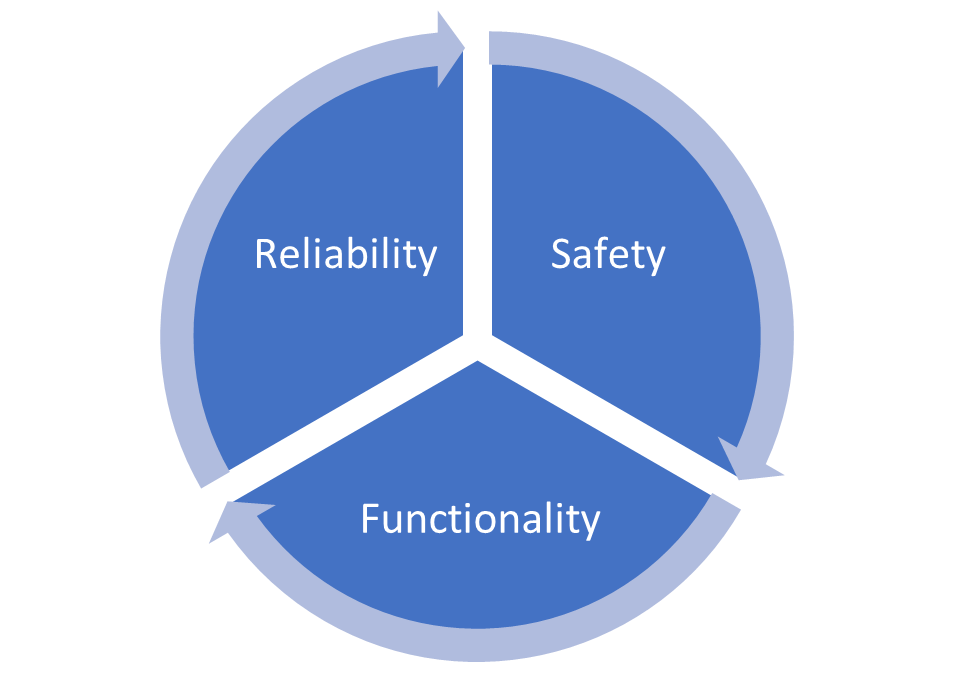
Safety – The most important element of the test process is to ensure that the control panel is safe. Electricity can be lethal if not managed correctly, so first and foremost we need to ensure that any control panel leaving Bensons’ premises is safe to be powered up.
Functionality – If the panel does not perform the function for which it was designed, then it has no value to the customer.
Reliability – Not only must the control panel be safe and work, it must continue to work long into the future. It is not unusual for control panels built by Bensons to work reliably for over 30 years. A control panel is for life, not just the warranty period.
It is important to make clear that if a robust manufacturing process is followed, then quality defects should be identified and addressed before a control panel reaches test. Inspecting quality into a finished product is not a sustainable approach to delivering high-quality solutions. At Bensons, our test process serves to validate that quality has been designed and built into the control panel.
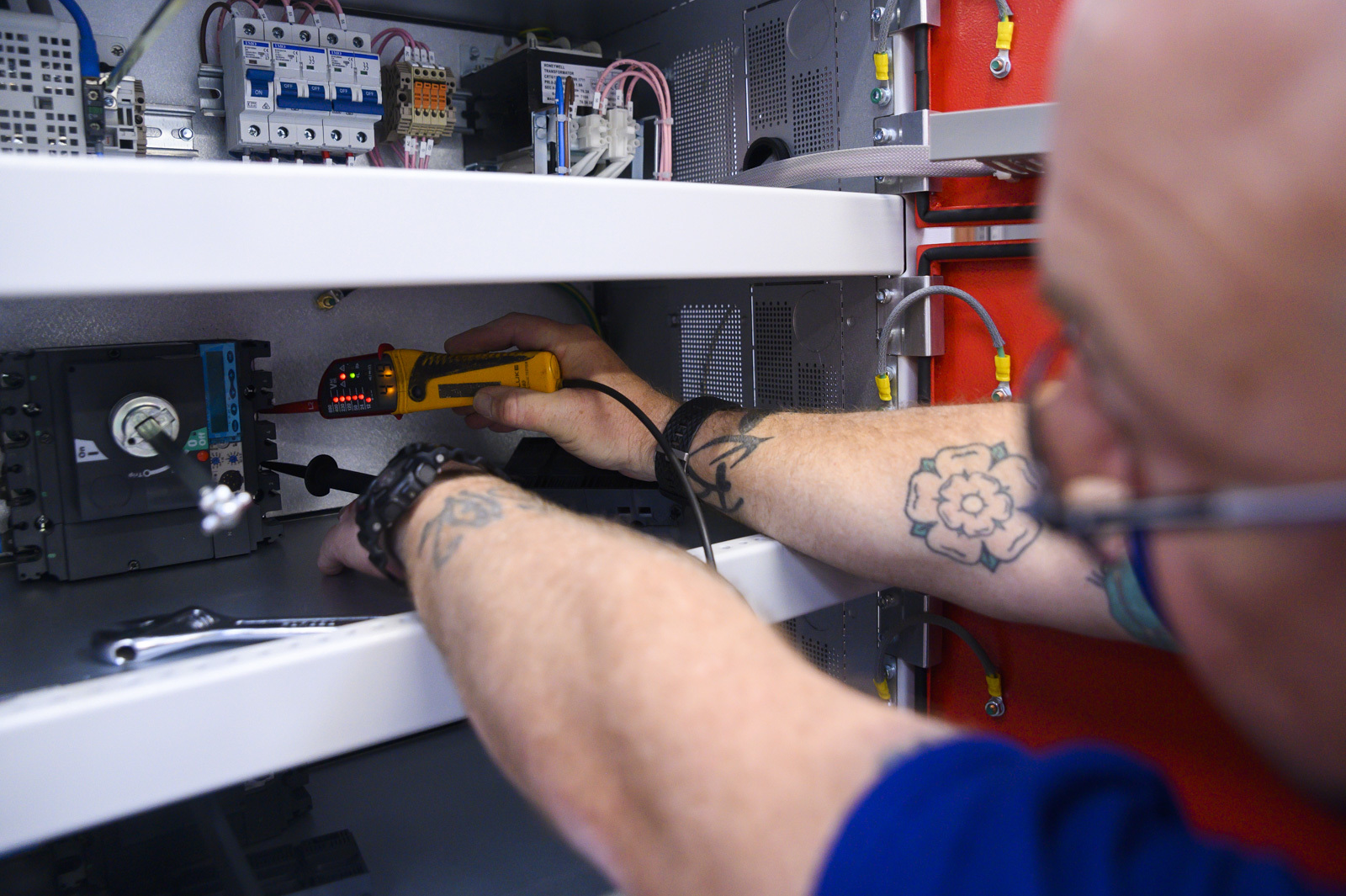
How does Bensons test a control panel?
Every control panel that Bensons builds has to be perfect. To achieve this we ensure that we have a safe environment to work within; a reliable and robust process to follow; the right tools to carry out our testing, and highly skilled people.
What is the Process?
As with our manufacturing process, we have a systematic approach for testing our control panels. Before the panel is made live there are many checks which need to be carried out. These are summarized below:
- Design and construction - The layout of the control panel is checked against the drawings; is the panel built in accordance with the specification; has the panel been built in line with the correct release of drawings; are the labels correct; are there any defects to the fit and finish of the control panel; are all the lamps the correct colour.
- Earthing – It is important to have a good path to earth on a control panel, so that in the event of an electrical fault, there is a path for the fault current to flow to earth. This protects people from the risk of an electrical shock. As part of our test process we will check that all parts of the control panel are appropriately earthed, measuring and recording the earth bonding resistance.
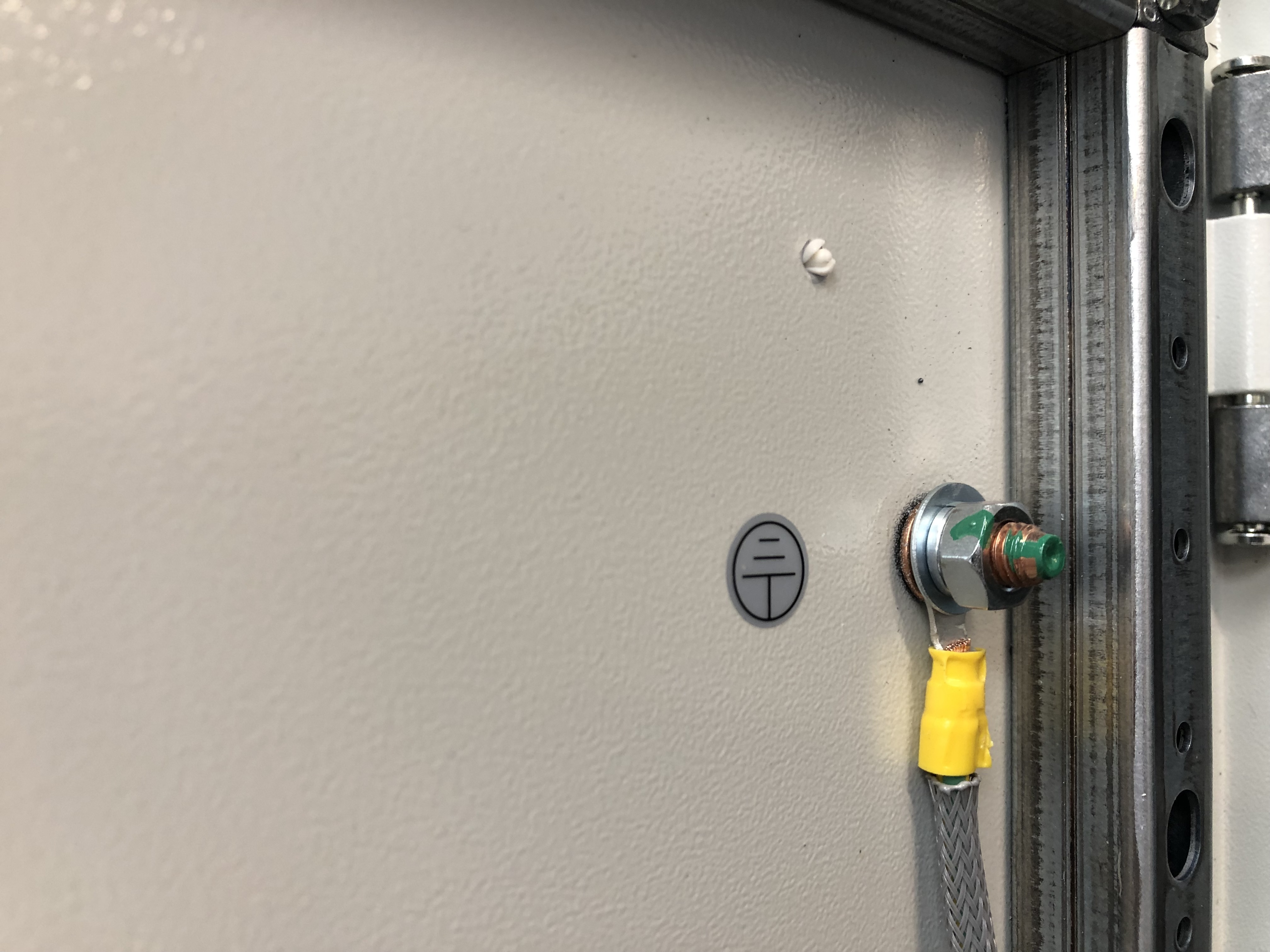
- Tightness testing – Tightness testing on power circuits is essential for the long term integrity of connections. If a connection is even slightly loose, there is the risk that cyclical heating and cooling of connections under power will lead to the connection becoming looser, eventually leading to a short circuit and potential electrical failure or fire. At Benson, we check all power connections for tightness, ensuring that the right torque has been applied. Where the torque check is carried out, we will mark the bolt (or screw) with an indelible marker to make this clear. If we have bought in a control panel assembly with a busbar system pre-assembled, we will carry out our own tightness checks even if our supplier has already done this. Pull tests are carried out on power cables selected at random to ensure that all connections are tight.
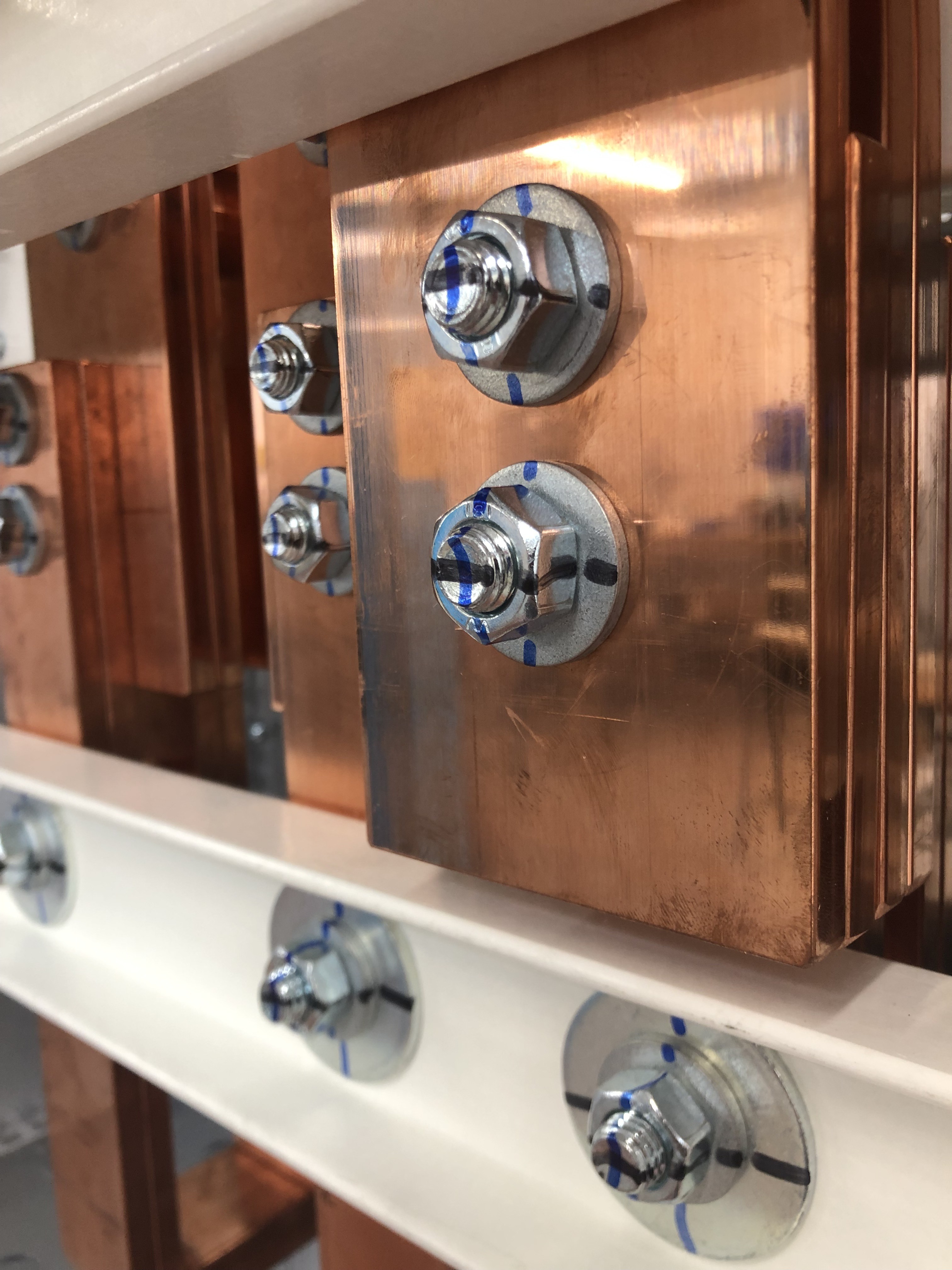
- Insulation resistance testing – This is a test carried out to ensure that there are no short circuits in a control panel, for control panels with bus bar systems then a flash test is carried out. For control panels without busbars, then a Megger test is carried out.
- Shrouding – Many customers will require that devices distributing power within the control panel are shrouded to prevent them being accidently touched if anyone is working inside a live panel. This requirement will be made clear on the drawings, with shrouding and warning labels checked.
- Cabling – checks will be carried out to ensure that the correct cable colours been used throughout; the cable sizing in line with the specification, using the correct type of cable with the right identifications in place.
- Point to point testing – the final check before making a panel live is to carry out point to point tests on cables, this involves checking each circuit to ensure that every wire is terminated correctly at both ends.
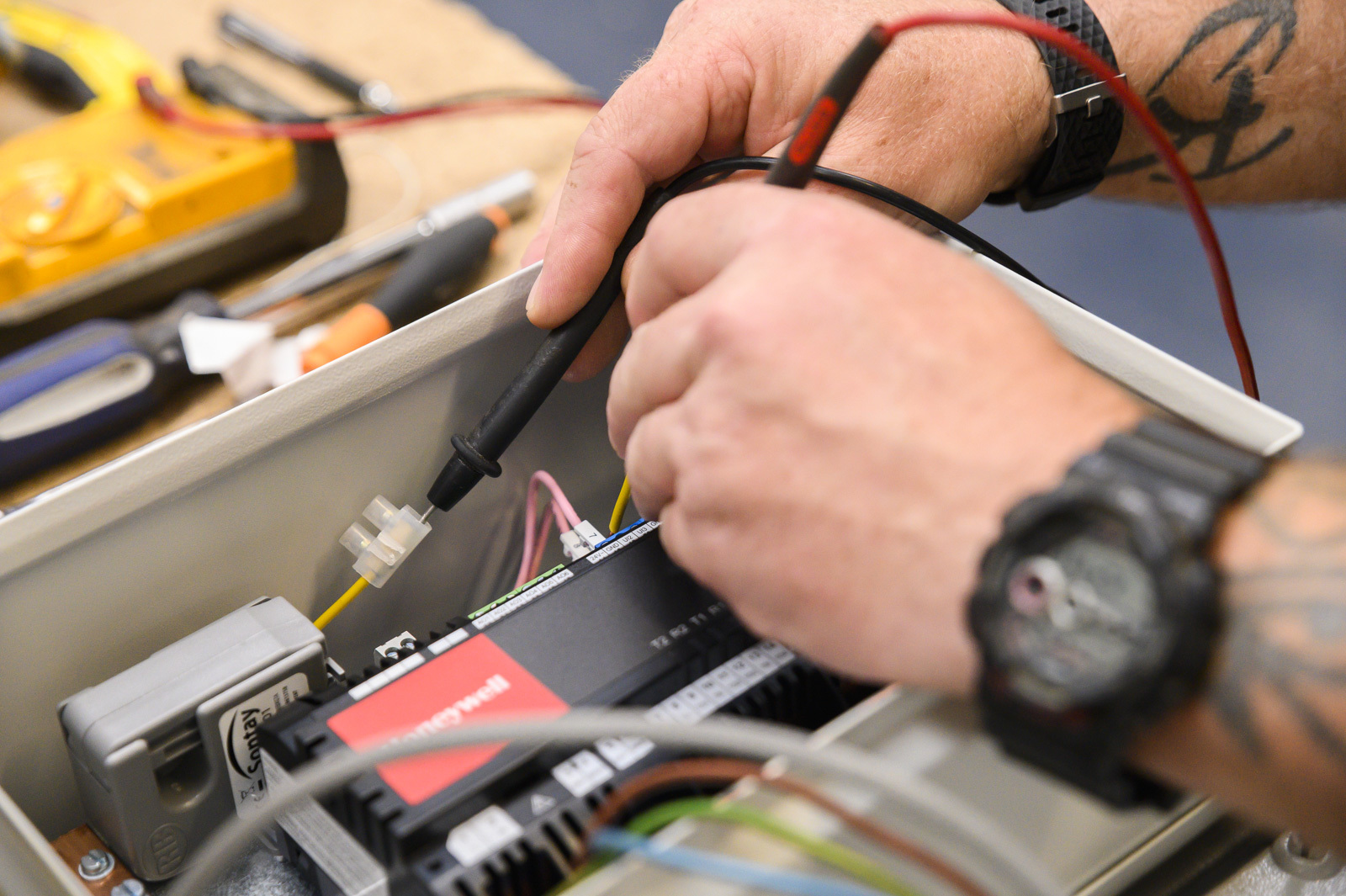
Once all of the above checks have been carried out, then the panel is known to be safe and ready to be powered up. After energizing the functionality of the panel can be verified.
- Power circuits – each circuit is powered up in turn either by installing its fuse or turning its circuit breaker on. Checks are carried out to ensure that the circuit is distributing the correct power to the correct components.
- Control circuits – Only now is the functionality of the control panel tested. The control logic associated with each circuit is checked to ensure that the various switches, lamps and interlocks function as required.
- PLCs, Controllers and HMIs – Many panels feature Programmable Logic Controllers (PLCs) which are industrial computers containing complex control programmes. When the construction of the panel has been confirmed to be correct, then the PLC programme can be loaded and fully tested. Often the PLC will link to a Human Machine Interface (HMI) – effectively a display – which again can be fully tested at this point. Similarly, for control panels in the Building Management Systems (BMS) industry, programmes can be loaded and verified at this point.
What equipment is required?
To carry out the comprehensive array of tests requires a comprehensive range of tools, ranging from wire links to simulate inputs to the control panel, through to multimeters, torque wrenches, flash testers and signal generators. All equipment used needs to be in full working order at all times. At Bensons, all of our test equipment is regularly calibrated in line with an agreed schedule that is documented in our BS ISO9001:2015 process. This means that our customers can be confident that when we sign-off a panel as tested, it has been accurately tested.
What about the people?
A golden rule at Bensons is that no-one tests a control panel that they have built themselves. We take this further by having dedicated test engineers who are not involved in the manufacturing process, save to answer any technical questions that might arise.
When testing a control panel, it is important the test engineer continually challenges what they see, the circuit might function perfectly in accordance with the design, however if there has been an error in the design then it is important that this is corrected so that the customer gets what they need.
How do we know if a panel has been tested?
The scope of testing is extensive and it is essential to ensure that all elements are carried out and nothing is missed. At Bensons, our engineers will mark off each circuit on the manufacturing drawings when it has been tested, meaning there is physical record of what tests have been completed.
When the testing of a control panel has been completed then all test results are recorded on a test certificate dedicated to each control panel. The responsible test engineer will sign the test certificate, in line with our BS ISO9001:2015 manufacturing system. A copy of the test certificate is provided to the customer with the control panel. Likewise, since our control panels have been designed, built and tested in accordance with the appropriate UK regulations, each control panel supplied by Bensons is provided with a Declaration of Conformity and UKCA mark.
Conclusion
We hope the above information provides you with the peace of mind you need to be confident that a Bensons control panel will work first time, every time when installed in you system.
If you have a project that you would like to discuss with us, then please contact us via hello@bensonspanels.co.uk or call us on 01924 894162.
Celebrating ISO9001 Audit Success - and why it matters to our customers
We’re delighted to share that Bensons Panels has successfully passed our latest six-monthly ISO9001 audit, this one had a particular focus on our manufacturing processes and systems.
Five tips for a High-Quality Control Panel Enquiry
At Bensons Panels, we believe that great projects start with great conversations. The early conversations that come at the enquiry stage can shape the outcome and character of the whole project.
Investing in Expertise – The Added Value from Working with Bensons Panels
Choosing the right control panel partner is an important decision, one that can shape your project’s immediate success, but also the ongoing efficiency and reliability of the system that the control panel is integrated into.
Leeds Manufacturing Festival 2025
On 12th June, Bensons attended the Leeds Manufacturing Festival (LMF) annual awards, this year hosted at Leeds Beckett University, to celebrate the champions of the industry.
Need to discuss your perfect Control Panel solution? Simply fill in the form with your details and requirements and we'll be in touch!
